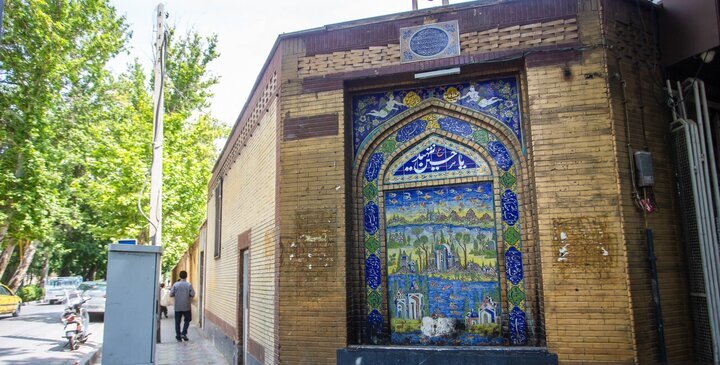Isfahan saqqakhanehs, treasures forgotten in history

TEHRAN—Saqqakhanehs are not only the traditional structures for providing drinking water to the passersby, they also have served as living symbols of the connection between art, religious belief, and social responsibility in heart of Isfahan’s historical texture.
They have had a special status in social structure of the city. Due to their ritual and aesthetic functions, they have formed an independent and cultural identity in mind of citizens, Mehr news agency wrote.
Saqqakhanehs used to be built in congested spaces such as bazaars, main passages and old districts. They gradually turned into places for ritual gatherings, vows, and supplications, where collective memory and local identity were tangible.
They used to be the major elements of Isfahan’s social texture, but they have fallen into oblivion. Their revival is tied to a cultural reinterpretation.
The trend of urban expansion, institutional neglect and gradual forgetting of the historical role of these elements have caused many saqqakhanehs to be destroyed or lose their authenticity. In the current situation, the importance of addressing saqqakhanehs not only as historical elements, but also as manifestations of local architecture, religious rituals, and the cultural memory of the city is an undeniable necessity.
Mansour Dadmehr, a cultural heritage researcher, said the main duty of saqqakhanehs has been to provide water to the thirsty passersby, but they played social and even political roles at certain times in history. For example, a protest movement took place around one of Tehran's drinking establishments in Qajar era, which is due to its respect by the people.
In a year that people faced water shortage, they resorted to Touqchi saqqakhaneh in Isfahan. They believed that this place could address their water shortage, he said.
These beliefs led to some water houses enjoying special respect and status, he added.
He continued that usually, benevolent people and rich families were custodians for construction of water fountains. They used to devote a part of their building with the intention of quenching the thirst of passersby, he added.
Dadmehr explained that saqqakhanehs were gradually located en route of mourning groups. This led to saqqakhanehs are taken into consideration as a place for donations during Muharram rituals, he pointed out.
Dadmehr explained that providing water to the thirsty people and presence of a person who distributes the water, is reflecting the beliefs pertaining to Ashura and the role of Hazrat Abbas (AS) in providing water to the tents of Imam Hussain (AS) and his companions in Karabla, Iraq.
He continued that many saqqakhanehs have been destroyed or are not in good conditions. Unfortunately, during the restoration process, measures have been done which have distorted the identity of these buildings, he said.
“The Cultural Heritage Ministry should preserve the ancient saqqakhanehs and prevent construction of modern saqqakhanehs. Preserving the historical models of saqqakhanehs will help the future generations become familiar with water providing culture and respecting the water resources.”
He named Haj Aqa Shoja Saqqakhaneh as one of the beautiful models which has remained from the old times.
Also, Ali Atrian, architect and university professor, said that Isfahan is a city located on the edge of the desert, and access to drinking water has been very important to the people in the past. Unlike desert cities that required water reservoirs, in Isfahan, due to the relatively high groundwater level, drinking water supply was possible through shallow wells and there was no need for extensive water reservoirs, he said.
For this reason, instead of expanding reservoirs, saqqakhanehs have been built in abundance in Isfahan, he added. The morphological structure of the land and the relatively easy access to water have caused saqqakhanehs to be scattered at different scales throughout the city's fabric and form part of the city's social architecture, he pointed out.
Atrian also said that due to popularity of special tileworks, stone carvings and wooden knotworks in Isfahan, special decorations have been used in saqqakhanehs.
KD
